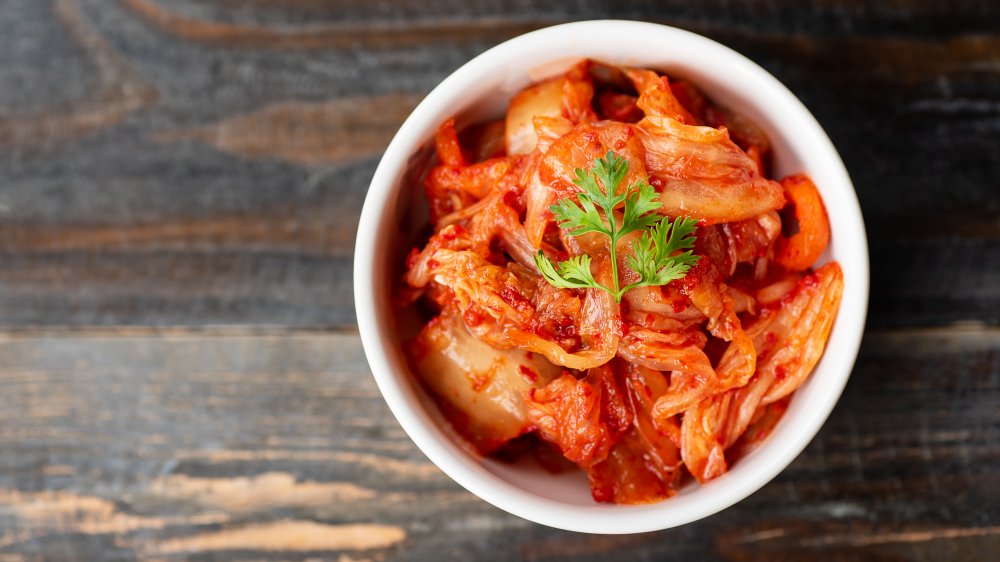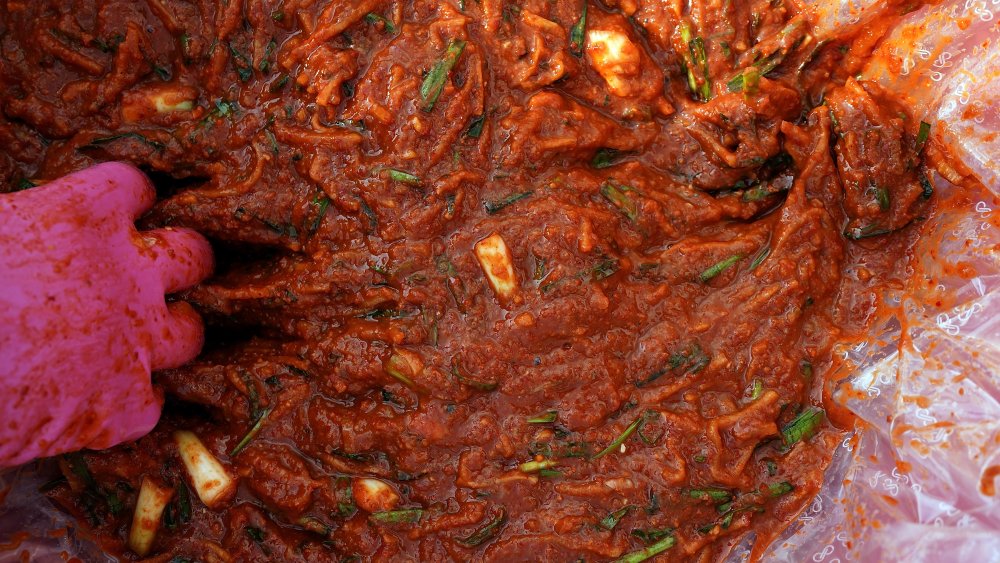The Untold Truth Of Kimchi
Kimchi, or fermented vegetables, is a staple in Korean cuisine. Eaten mainly as a side dish, it can be made with a number of vegetables including radish, carrot, or cucumber, but typically kimchi made with Napa cabbage is the most famous and well-known variety (via Asian Recipe).
Part of the reason that it's such an important part of Korean food culture is its longevity. Kimchi goes back around 4,000 years (via Science Direct). Traditionally, kimchi was buried underground, which was helpful in regulating the temperature during the fermentation process (via Laura Lemay).
Similar to pickles or sauerkraut, kimchi is a food that is made by using the fermentation process. Kimchi uses the lactobacilli bacteria to transform from a fresh vegetable to a pickle (via Cooks Illustrated). The bacteria feeds on the naturally occurring sugars in the cabbage and transforms them into both acid, which lowers the pH level of the cabbage — thereby preserving it, and gas, in the form of carbon dioxide, which explains why kimchi is sometimes thought of as slightly carbonated or bubbly.
The truth behind kimchi's rise across the world
No longer just a necessity for the Korean kitchen, kimchi has now become a culinary hit in the United States as well as around the world. From kimchi tacos to kimchi Bloody Marys, and from grilled cheese to burgers, kimchi has been popping up in all sorts of places in this country's food scene, and has even been spotted on menus at restaurants such as TGI Friday's and California Pizza Kitchen (via The Atlantic).
Perhaps not since ketchup has a condiment become so loved by America's food scene. Part of the reason is its versatility. Different types of kimchi are suitable for different seasons, and you can enjoy the dish year-round. There are even kimchi cookbooks that encourage people to think outside the box.

